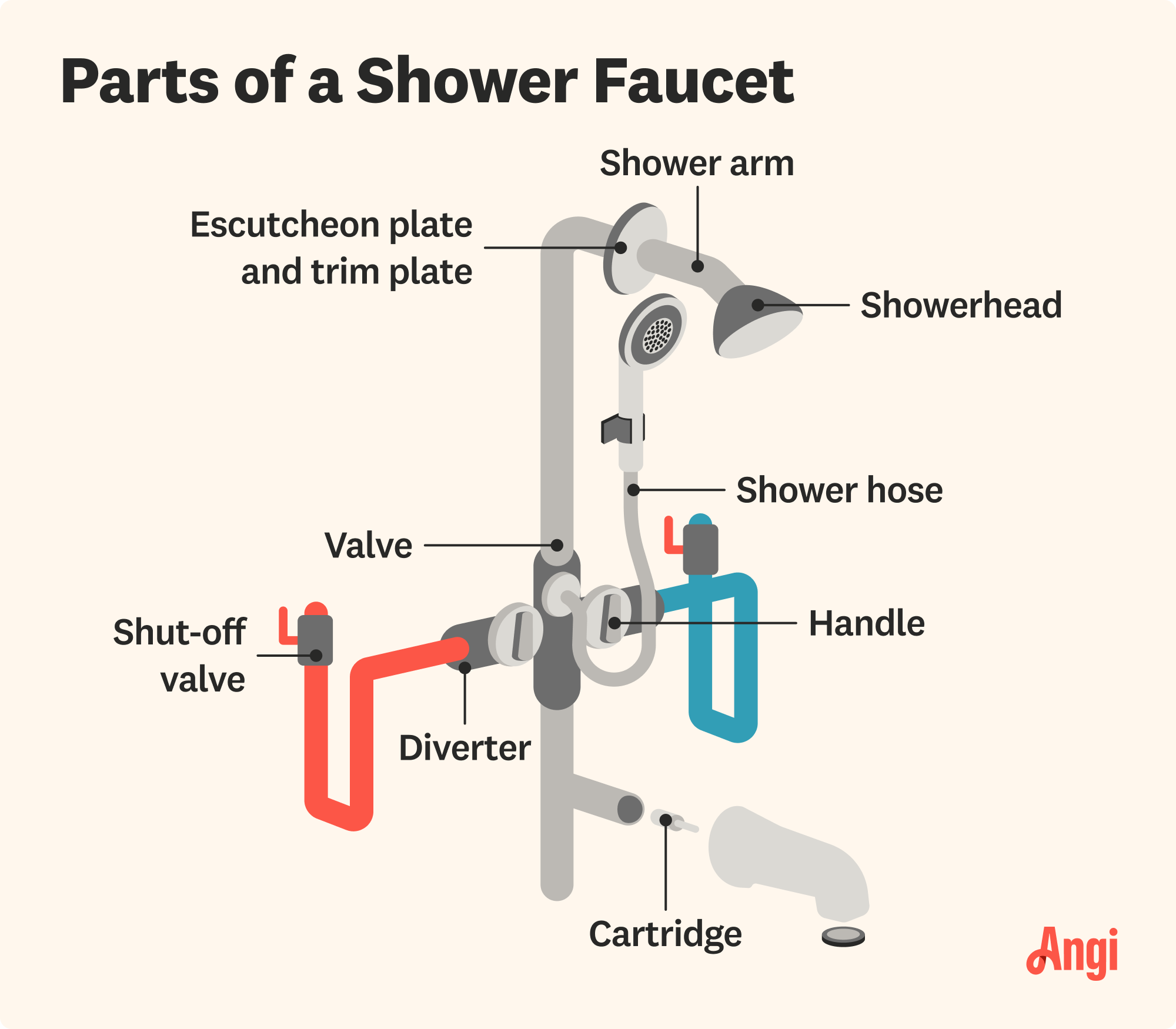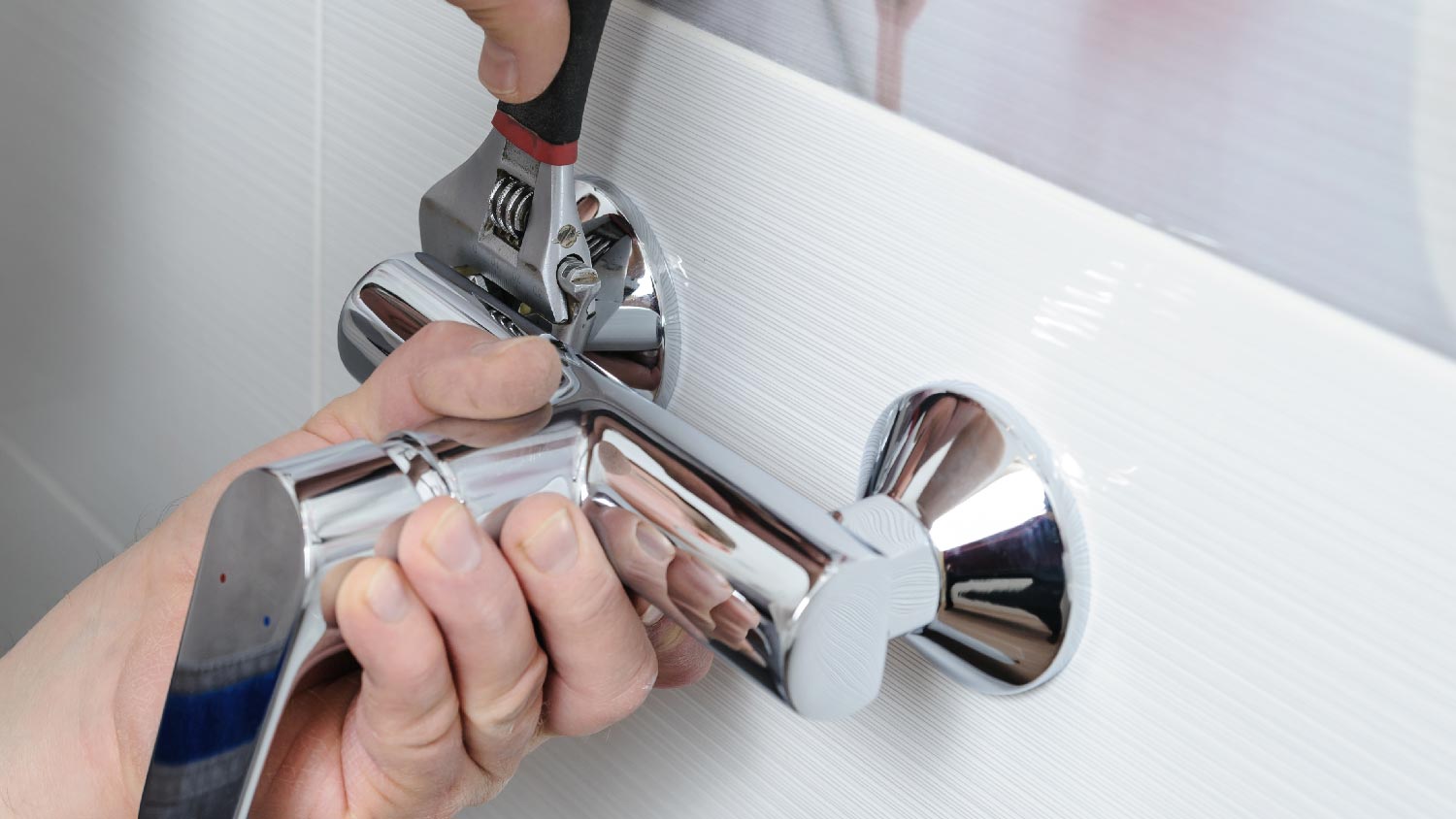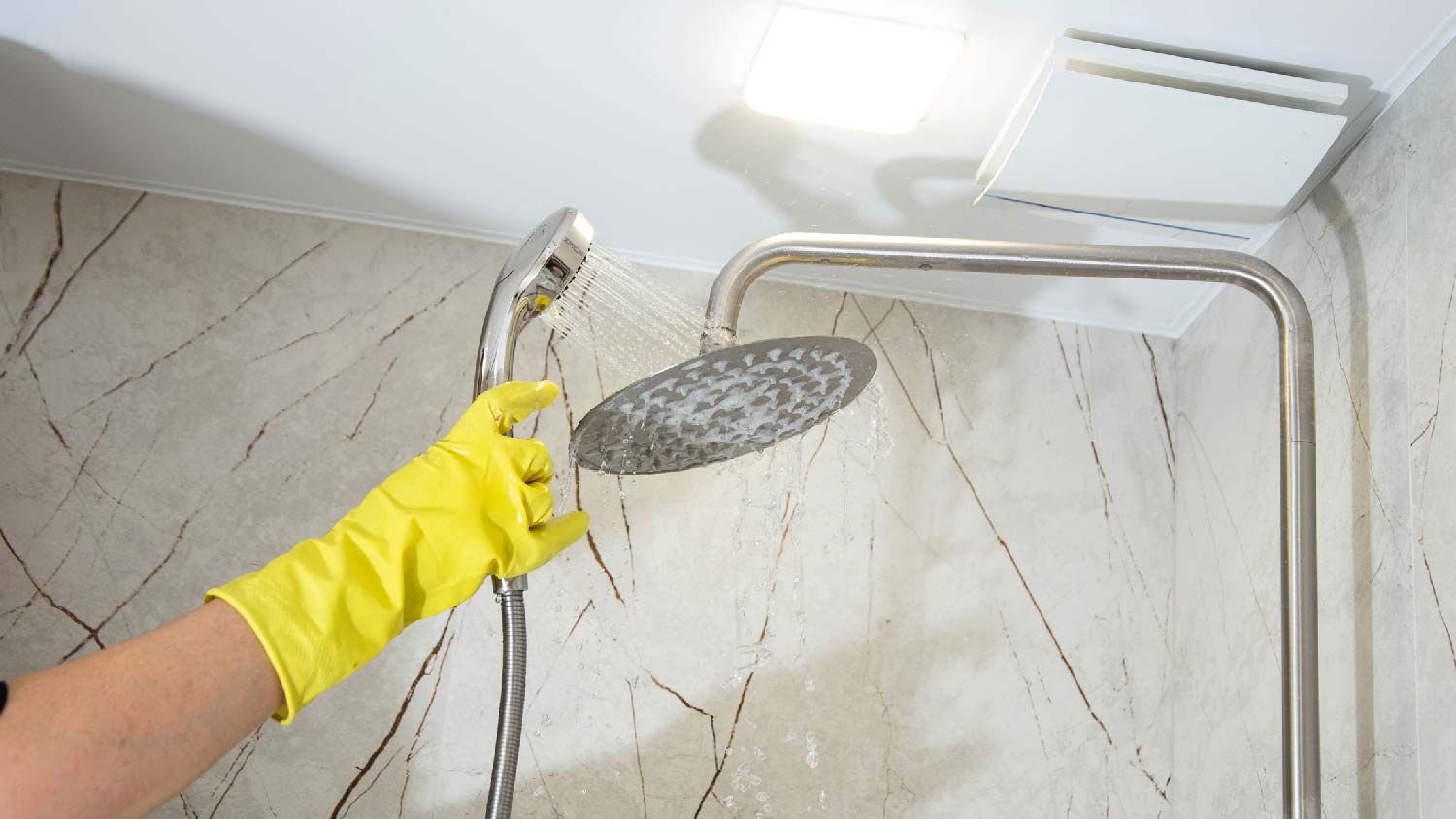
Making updates to your home? You may need to move your gas line to fuel new appliances or meet code regulations. We’ll cover the cost of moving a gas line, plus project tips.
Learn when to handle with care and when to go with the flow


Shower faucets are made of several parts that work together to keep the water at the right temperature and pressure.
Some parts—like handles and showerheads—are visible, while hidden parts—like valve cartridges and shut-off valves—are behind walls.
If a part stops working, you could have drips, low water pressure, or leaks.
Simple maintenance tasks like removing mineral buildup and lubricating moving parts can keep your shower faucet in good shape.
You can DIY some showerhead repairs or replacements, but complex jobs require hiring a licensed plumber.
It’s easy to take for granted all of the parts that make up a shower faucet. A network of precisely engineered pieces works together to give you the perfect flow and temperature with the turn of a handle. This guide explains the role of each piece and how it functions to make a shower faucet greater than the sum of its parts.
While your exact shower faucet and shower plumbing may have varying parts, these are the most common parts of a shower faucet.

The handle or knob is the most visible part of a shower faucet, and it’s the one you interact with most. It controls the water flow and temperature. Handles come in various styles to match different shower designs, including these popular ones:
Lever Handles: These single grips are easy to adjust, even with soapy hands.
Cross Handles: A classic handle shape that’s stylish, but they can be trickier to turn with wet hands.
Knob Handles: These compact and simple knob handles require more force to turn them into place.
The shower handle connects directly to the shower valve, giving it control over the shower temperature and flow.
Tucked behind the wall is the shower valve. This part of a shower faucet regulates the water temperature and flow by blending hot and cold water. When you turn the handle, you’re adjusting the position of the inner valve cartridge, which shifts how much hot and cold water enters the mixing chamber. The result is the perfect temperature and pressure.
Some types of shower valves, like pressure-balancing valves, have safety features to prevent sudden temperature and pressure changes. So if someone flushes a toilet or starts a water-guzzling appliance, it shouldn’t put a damper on your shower.

If your shower doubles as a bathtub or you have two showerheads, your shower faucet will likely have a diverter. This small but mighty part allows you to switch the flow of water between the tub spout and the showerhead.
Shower diverters come in different styles to choose from:
Tub Spout Diverter: Lift a small lever on the spout to redirect water upward from the bathtub spout to the showerhead.
Valve-Integrated Diverter: Adjust the main handle to control the direction of the water.
Separate Diverter Knob or Lever: This standalone control shifts water between outlets when you pull or slide it.
If you have a handheld showerhead in addition to a fixed showerhead, a diverter can switch the water flow between the two or allow you to use both simultaneously, depending on your shower plumbing.
The escutcheon plate and trim plate are the finishing touches on a shower faucet. They cover the hole in the wall where the faucet attaches to the internal plumbing and give your shower a polished look.
The escutcheon plate is closest to the wall, protects it from water damage, and hides the rough edges. The trim plate covers the area around the handle for a seamless look. This dynamic duo comes in various finishes—like brushed nickel, chrome, and matte black—so you can match your shower hardware to your overall bathroom design.
The shower arm is the pipe connects the showerhead to the faucet system. It extends from the wall and positions the showerhead at a comfortable height and angle for the user. Shower arms come in various lengths and styles, including a standard, S-shaped, and adjustable arm.
The showerhead is where the magic happens. Water exits the plumbing system here, and the type of showerhead you choose shapes your overall showering experience. Types of showerheads include a fixed model that’s mounted to the wall, a rain showerhead that can be mounted to the wall or ceiling, or a handheld showerhead.
There are also efficiency options, such as low-water and high-pressure showerheads that reduce =water consumption without sacrificing pressure. These let you save on water bills while still enjoying a relaxing shower.
If your showerhead is a handheld model, you’ll also have a flexible shower hose that allows you to hold and move the showerhead, which is especially helpful for older adults who shower sitting down. Most shower hoses are made of metal or reinforced plastic.
Shut-off valves are an essential shower faucet part that make maintenance and repairs less messy. They let you cut off the water supply to the shower without having to turn off the water to the entire house. You’ll find them located behind the wall or under the floor of your shower.
From the handle to the showerhead, every part of your shower faucet works together to create a satisfying showering experience. Whether you’re troubleshooting a leak or upgrading your bathroom, understanding the common components will help you make the best decisions for your bathroom project.

No matter which type of shower faucet you have, keeping it in good shape isn’t rocket science—it’s more like plumbing 101. Regular maintenance helps prevent annoying drips and costly repairs. Just think of it like a spa day for your shower. Here’s how to keep things flowing smoothly:
Clean the Showerhead: If your shower pressure is more like a trickle, mineral buildup in the aerator or showerhead holes could be the culprit. To rinse away buildup, unscrew the showerhead, soak it in vinegar for about an hour, and scrub it clean with an old toothbrush.
Check for Leaks: A small drip might seem harmless, but it can lead to higher water bills and damaged parts. If any part of your shower faucet is leaking, inspect it to see where the water is coming from and replace worn parts. If you can’t find the source of the leak, call a plumbing pro.
Lubricate Moving Parts: Over time, handles can become hard to turn. A little plumber’s grease on the cartridge and valve stem can keep things moving.
Flush the Shower Valve: Sediment from your water supply can clog the valve and reduce water pressure. Turn off the water, remove the cartridge, and flush the valve with water to clear out debris. If you’re not so handy, a pro can do this for you.
Inspect Seals and Gaskets: Worn-out parts like seals and gaskets are a common source of leaks. Check them regularly and swap them out at the first sign of wear.
Fixing a shower faucet yourself can save you a splash of cash, but it might not be worth it. For example, swapping out a handle or cartridge is a fairly easy task that most people can do with basic tools and a bit of patience. However, if a valve needs replacing or you have to open up a wall, it’s time to call a pro plumber near you.
Below are comparisons of the cost to DIY a shower faucet repair and the cost to hire a pro, including shower valve replacement costs and shower cartridge replacement costs.
| Type of Shower Faucet Repair | Average DIY Cost | Average Pro Cost |
|---|---|---|
| Shower cartridge replacement | $50–$120 | $150–$350 |
| Leaky O-ring or washer replacement | $5–$100 | Up to $300 |
| Shower handle replacement | $10–$100 | $45–$200 |
| Shower valve replacement | $25–$150 | $150–$550 |
If your shower is acting up, it can be easy to expect the worst. So take a deep breath and plunge in to see whether repair or replacement is the right call.
If your shower faucet has a minor problem, like a dripping handle or reduced pressure, you’re likely looking at a fairly affordable repair. First, you’ll want to determine whether replacement parts are readily available and confirm that the shower faucet is fairly new and matches the rest of your bathroom fixtures. If all of these things are a go, repairing is the best call.
On the other hand, if your shower faucet is over 10 years old, regularly gives you grief, is corroded, or has significant wear—or you just want an upgrade—skip the repair and go right to replacement. A shiny new shower faucet can give your bathroom an instant upgrade.
Other reasons to opt for a replacement instead of repair are if your shower faucet is discontinued, the replacement parts are difficult to find, you want to upgrade the style, or it’s time to improve your shower’s water efficiency.
From average costs to expert advice, get all the answers you need to get your job done.

Making updates to your home? You may need to move your gas line to fuel new appliances or meet code regulations. We’ll cover the cost of moving a gas line, plus project tips.

The cost to replace polybutylene pipes runs between $150 and $5,100. Find out why you need to replace your pipes now—and how much you’ll spend.

Repairing a main water line is an urgent matter, so use this guide to get an idea of how much main water line repairs cost to act fast.

A new showerhead is an easy, affordable way to upgrade any bathroom. Learn how to change a showerhead, from removing the old to installing the new.

Range hood dripping water? You may have damaged flappers or need more insulation. Find out what’s causing the problem and call the right professional to fix it.

Discover grey water system cost details to learn about installation, maintenance, and ways to save on your home’s grey water system.